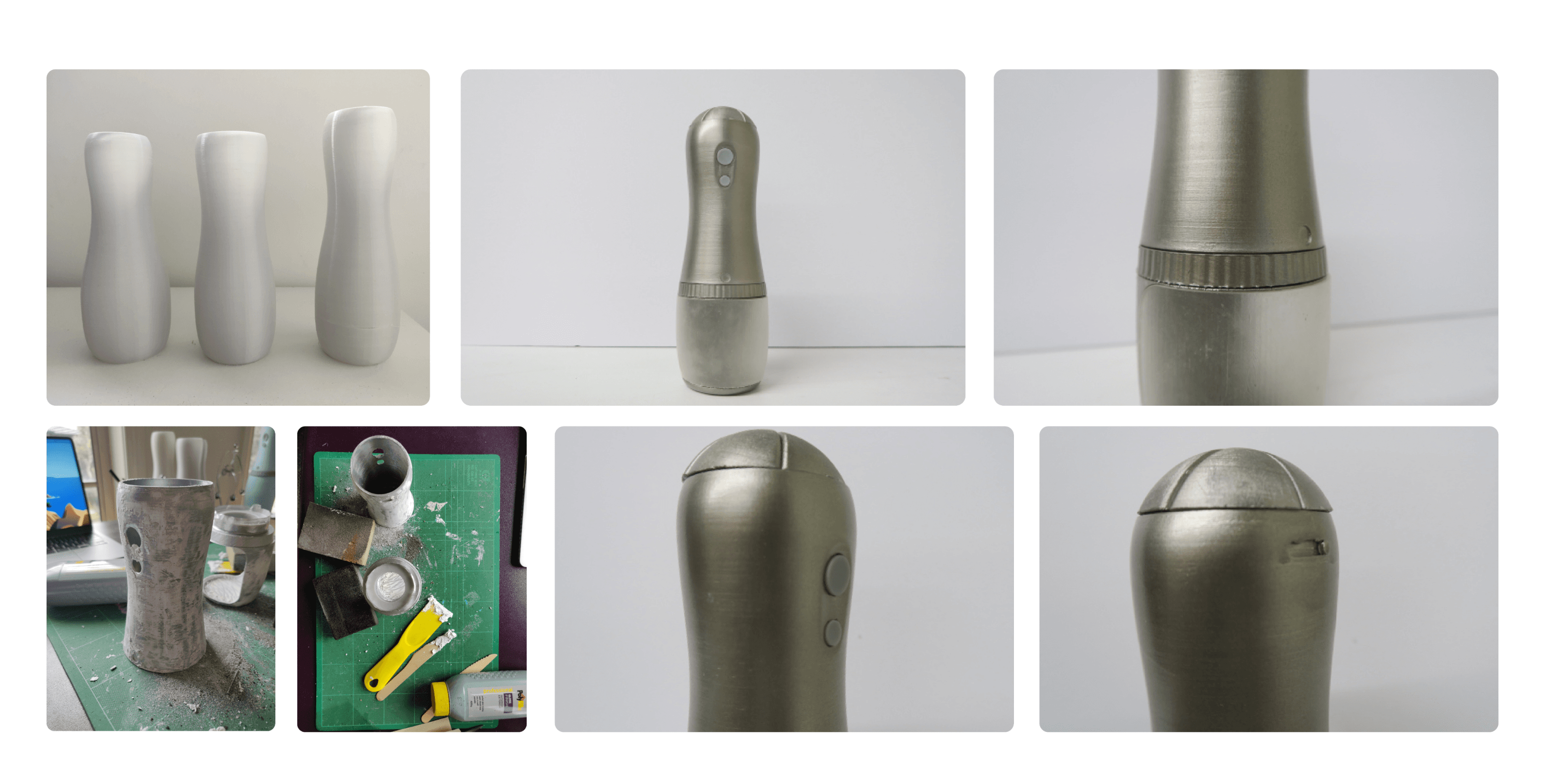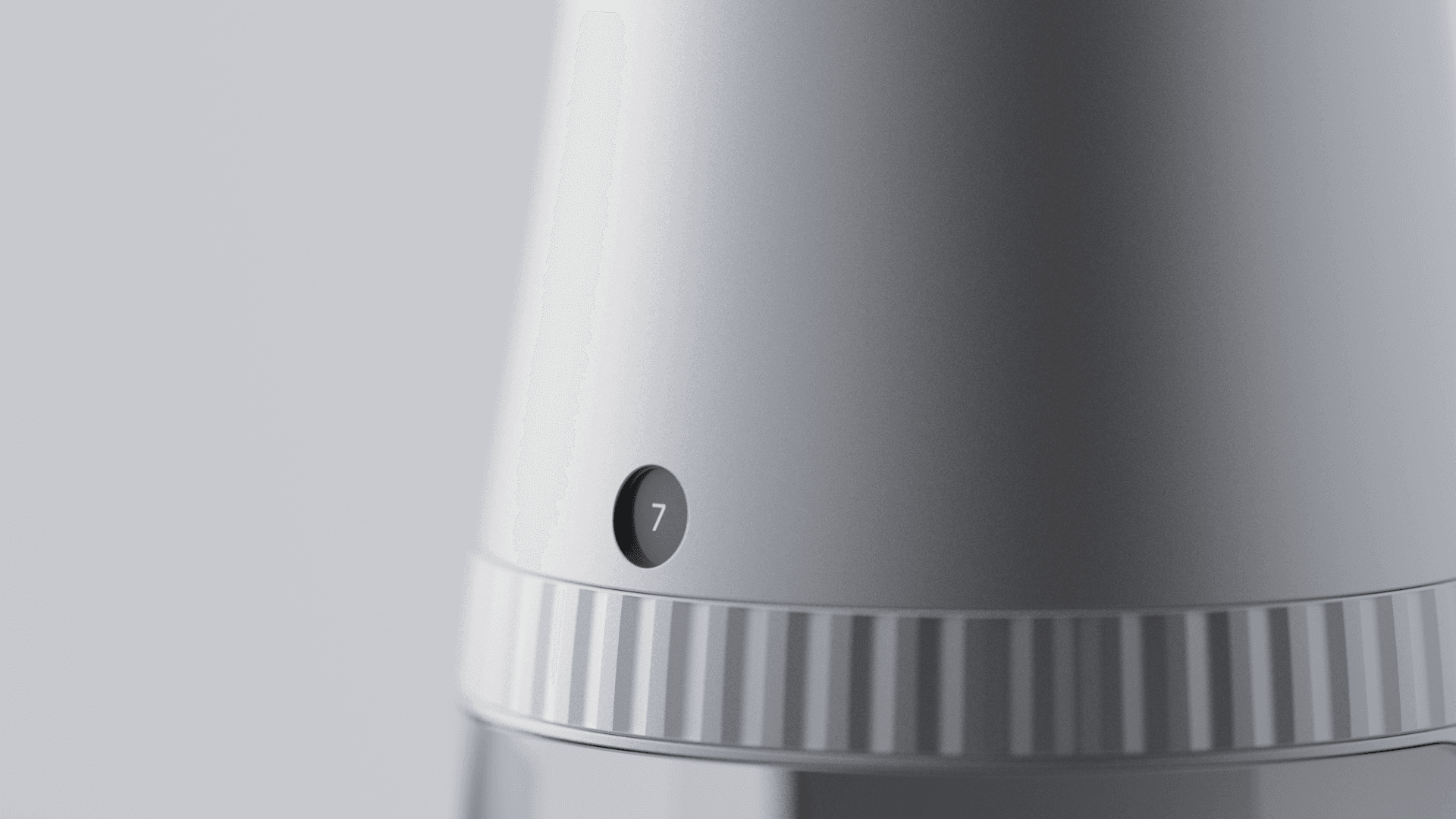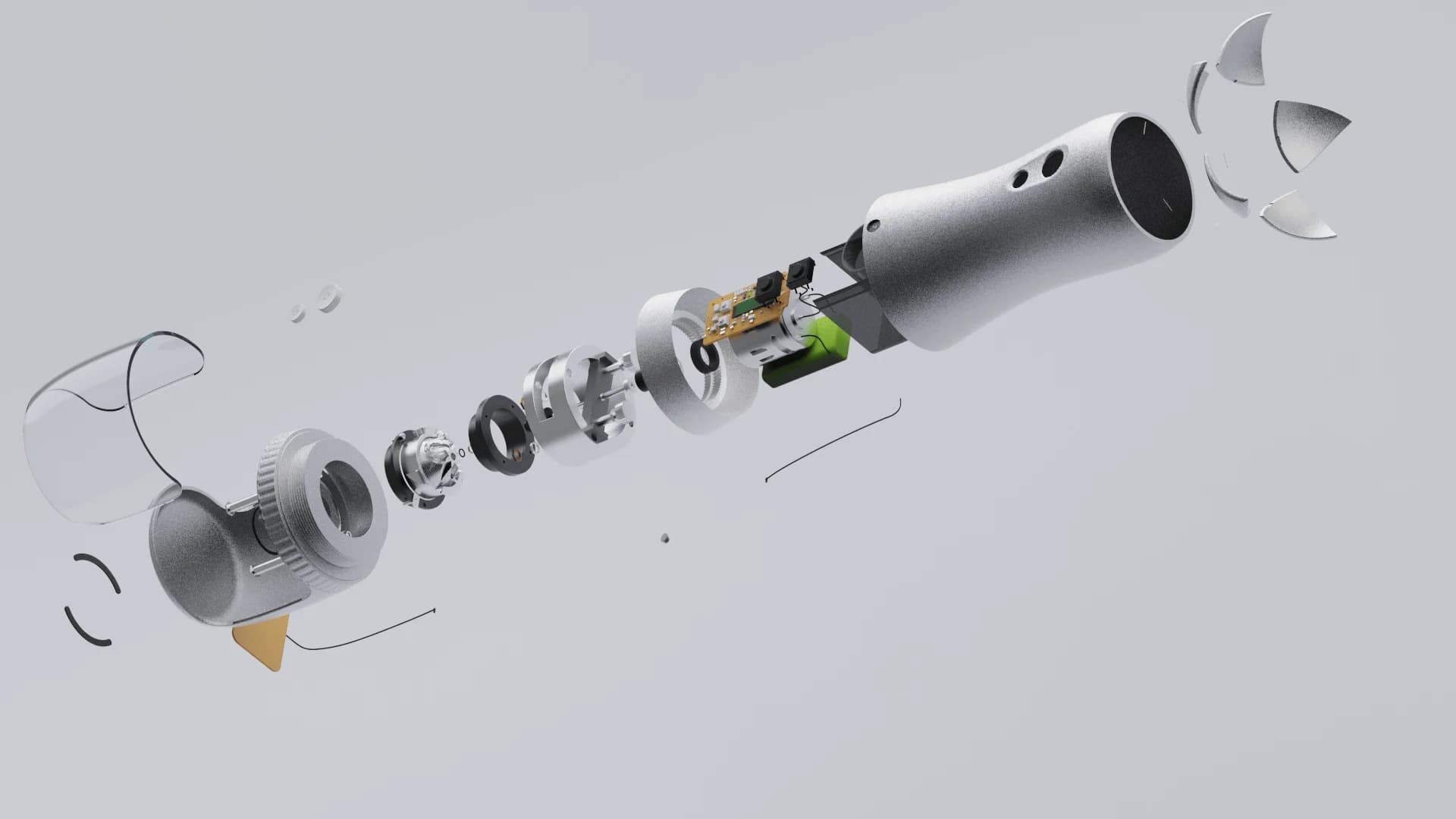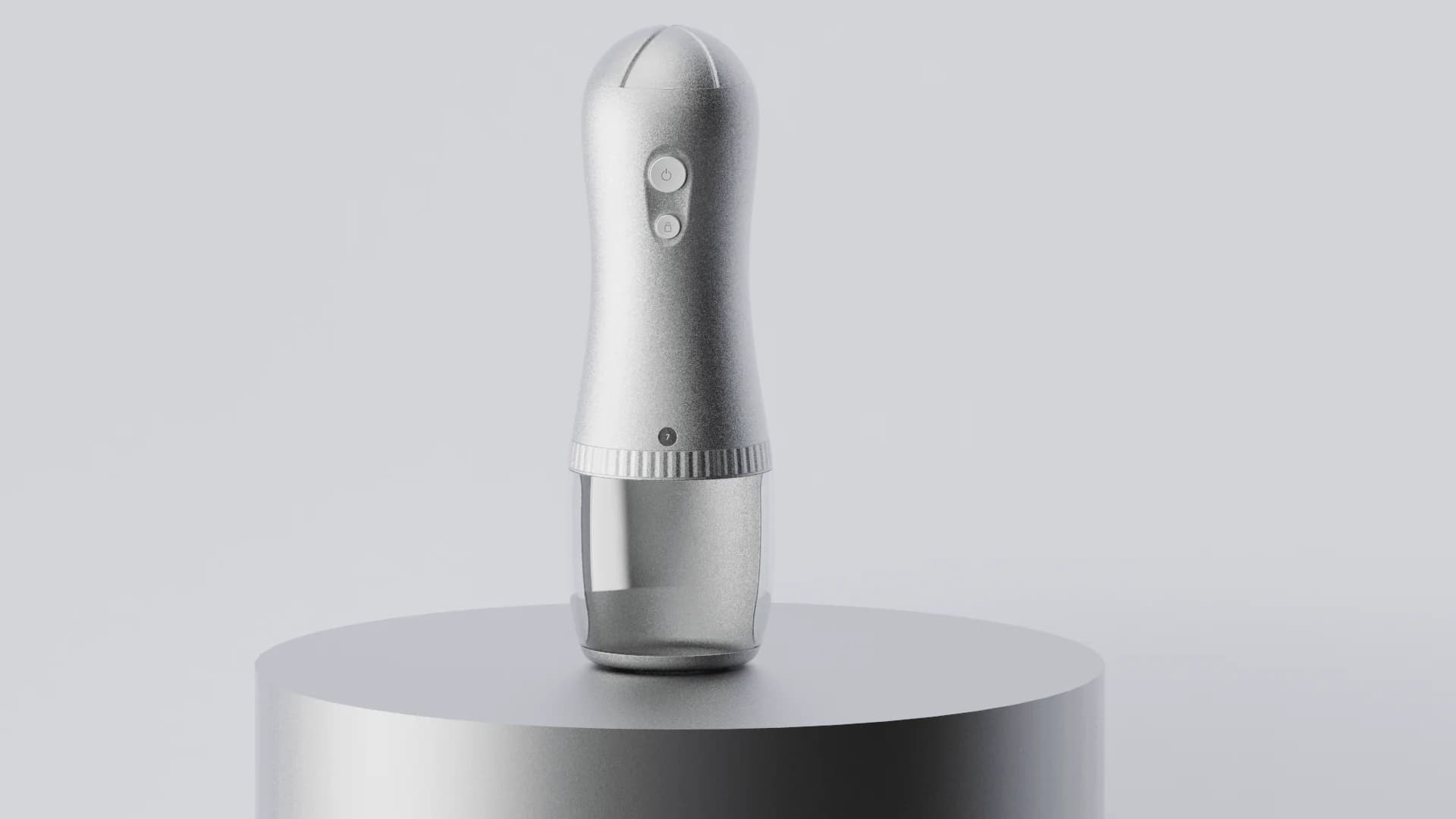Romano Coffee Grinder
07.2023


Designing for Coffee Ritual
Coffee preparation is as much ritual as utility for enthusiasts. The Romano Coffee Grinder project explored how industrial design could honor this ritualistic quality while delivering the precision performance serious coffee drinkers demand. The brief called for designing premium kitchen appliances that shared visual DNA and brand positioning, occupying a middle ground between utilitarian grinders and overly decorative designs. The featured Hand Mixer was designed by Kexin Qiu.


Coffee Grinder with beans
Establishing Brand Language and Form
The Romano brand aesthetic drew inspiration from mid-century Italian industrial design; Olivetti typewriters, Braun appliances, and Fiat vehicles, where functional objects achieved elegance through geometric clarity and material honesty. Working collaboratively with my teammate designing the hand mixer, we established shared design principles: cylindrical primary forms, tactile rotational controls, premium materials like brushed aluminium, and warm accent details in copper tones.
The coffee grinder's cylindrical form emerged from both aesthetic and functional considerations. Cylinders communicate stability and precision, important for a device generating rotational forces. The geometry creates natural zones: the upper region houses the bean hopper, the mid-section contains the grinding mechanism and motor, and the base provides stability and catch container access.


Concept sketches


Romano Coffee Grinder prototype
Interaction Design
I consolidated grind adjustment and activation into a single rotational control ring that felt intentional and ceremonial. The ring wraps around the mid-section, positioned where users naturally grip. Rotating adjusts grind size continuously from espresso-fine to French press coarse, with subtle detents at common settings. Activation uses a push-and-twist motion: press inward while rotating past a threshold, creating a deliberate moment of ceremony before grinding begins.


Grinds adjustment mechanism
Material Expression and Assembly
The material palette communicates premium positioning through execution precision. Die-cast aluminium with bead-blasted matte finish creates pleasant-to-touch surfaces that convey substantial build quality. Control surfaces use knurled aluminium with polished chamfered edges that catch light and emphasise precision.
The internal architecture balances serviceability with manufacturing efficiency, separating into three main sections: hopper assembly, motor and grinding mechanism, and base with catch container. The grinding burrs mount concentrically with direct drive, eliminating gears that introduce slop. The catch container sits magnetically retained in the base recess, easy to remove but secure during operation.


Exploded view


Charging pins to connect to dock
Cordless Operation and Brand Cohesion
Romano operates cordlessly through an internal battery charged via a dedicated dock. The dock uses spring-loaded pogo pins that accommodate slight misalignment while maintaining a reliable electrical connection. Magnetic alignment provides self-centring action. Battery capacity supports approximately twenty grinding cycles per charge, with subtle LED indicators showing charge status.
Viewing the grinder alongside the hand mixer revealed successful brand translation. Both products use cylindrical forms with similar proportions and material palettes. Control interfaces share rotational logic and tactile feedback characteristics. Detail treatments manifest consistently while each product reads clearly as its distinct function, creating brand equity where users encountering one Romano product immediately recognise another.


Charging dock


Romano Coffee Grinder and Hand Mixer

